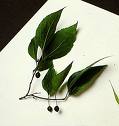Palo Blanco Tree Information
Images of Palo Blanco:






Palo Blanco grows in the following 17 states and provinces:
Alabama, Arkansas, Colorado, Florida, Georgia, Illinois, Indiana, Kentucky, Louisiana, Maine, Maryland, Mississippi, Missouri, North Carolina, South Carolina, Tennessee, TexasInformation about Palo Blanco:
The Celtis Laevigata is commonly known as the Hackberry, Lowland Hackberry, Palo Blanco, Southern Hackberry, Sugar Hackberry, Sugarberry as well as Texas Sugarberry.
The accepted scientific name for sugarberry is Celtis laevigata L. . Recognized varieties are as follows : C. l. var. texana (Scheele) Sarg. - Texas sugar hackberry C. l. var. brachyphylla Sarg. - Uvalde sugar hackberry C. l. var. anomala Sarg. - scrub sugar hackberry C. l. var. brevipes Sarg.) - Arizona sugar hackberrySugarberry is native to the southeastern part of the United States, ranging south from southeastern Virginia to southern Florida; west to central Texas and including northeastern Mexico; north to western Oklahoma and southern Kansas; and east to Missouri, extreme southern Illinois, and Indiana. It occurs locally in Maryland .In many areas, sugarberry occurs as scattered individuals. After disturbances, a seral sugarberry-American elm (Ulmus americana)-green ash (Fraxinus pennsylvanica) forest cover type may develop, with sugarberry as a codominant. This type intermixes with sweetgum (Liquidambar styraciflua)-willow oak (Quercus phellos) types, which contain essentially the same species in different densities. The sugarberry-American elm-green ash type occurs most often on the central coastal plain of the Gulf of Mexico, heavily concentrated on the Mississippi alluvial plain, and along major river basins . Publications in which sugarberry is listed as a dominant or codominant include: Woody vegetation of an old-growth creekbottom forest in north-central Texas. Quadrat study of a bottomland forest in St. Martin Parish, Louisiana. Woody species composition of the upper San Antonio River gallery forest. Productivity and composition of a baldcypress-water tupelo site and a bottomland hardwood site in a Louisiana swamp. Vegetative analysis of the floodplain of the Trinity River, Texas. Plant communities of the Santa Ana National Wildlife Refuge, Texas. The distribution of woody species in the Guadalupe River floodplain forest in the Edwards Plateau of Texas. Some of the information provided here is attributed to:Sullivan, Janet. 1993. Celtis laevigata. In: Fire Effects Information System, [Online]. U.S. Department of Agriculture, Forest Service, Rocky Mountain Research Station, Fire Sciences Laboratory (Producer). , available at the USDA Fire Effects Information System (FEIS) website